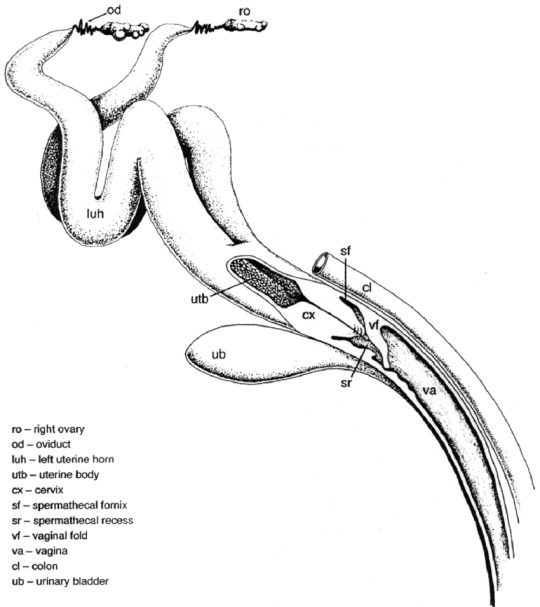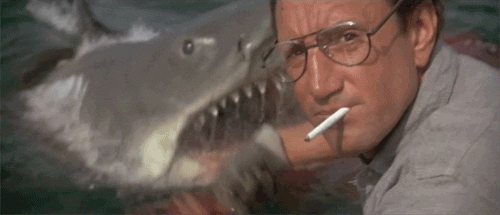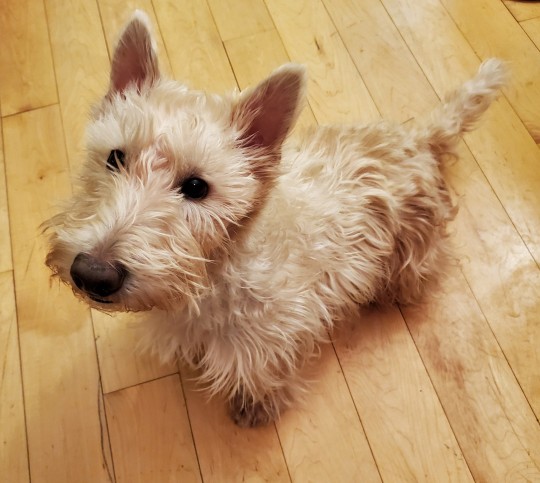Text
The first of several red wolf pairs was recently released into the wild by USFW, and the Facebook comments on the official announcement are of course filled with uneducated hunters and self-proclaimed “wildlife biologists” labeling them “vermin,” “coyotes,” or “not real wolves,” and openely promising to shoot or trap them to “protect” the deer and turkeys. The red wolf project is incredibly personal to me, and it’s absolutely nauseating to see cruel, selfish humans threaten the lives of animals I know and have cared for.
Red wolves (Canis rufus) are native to the southeastern United States. We have fossil evidence dating them back at least 10,000 years. Recent DNA evidence (2021) suggests their presence in North America may predate even gray wolves and coyotes, making it impossible for the species to be simply wolf-coyote hybrids as was once widely believed. The American Society of Mammology recognizes them as a distinct species, and they are protected under the Endangered Species Act.
Red wolves are a separate, unique species. Red wolves are part of the natural ecosystem of the southeastern United States, and they have been here long before European colonists ever arrived. Red wolves belong on their ancestral land. They are considered critically endangered by the IUCN Red List, and killing one carries grave legal consequences under federal law. Conservation is about maintaining a healthy planet of both predators and prey, not preserving overpopulations of game species so there’s plenty to go around for recreational hunters.
Save the American red wolf.
4K notes
·
View notes
Text
18K notes
·
View notes
Text

it's illegal to not say "oh big stretch" when your dog does a Big Stretch
21K notes
·
View notes
Text
dog owners, PLEASE get your dog(s) vaccinated against lepto.
87 notes
·
View notes
Note
Hi! I’m currently working on a big, detailed Blackfish rebuttal, which means lots of rabbit holes. I recently started rereading John Hargrove’s book (ugh). He talks about how the original Shamu died of pyometra and septicemia, claiming that it was something that, apparently, would almost never happen in the wild. The obvious implication here is that captivity caused these conditions, and/or that such is common with captive orcas. However, obviously septicemia can be caused by a variety of things, wild or not. As for pyometra, he doesn’t provide other examples of captive orcas suffering pyometra, nor have I been able to find other examples described in peer reviewed literature. It seems that that isn’t particularly common in cetaceans period, whether they’re wild or not, but I’m also not a marine mammal veterinarian. Since you’d know better about cetacean medicine, I was wondering if you knew anything more about this.
Ooh, that'll be interesting! I'd love to read it!
You're correct that Shamu is the only reported case of pyometra in a killer whale, wild or captive. The CRC Handbook of Marine Mammal Medicine makes no mention of pyometra in cetaceans, although it does occur in both wild and captive pinnipeds and has been reported in sea otters and sirenians. Pyometra is typically the result of bacteria migrating up the vaginal tract into the uterus, which at certain times is more susceptible to infection due to normal hormonal fluctuations. Theoretically, anything with a uterus can get pyometra, though some species are more commonly affected than others.
I would hedge to bet that pyometra is rare in cetaceans because of their truly unusual reproductive anatomy. Females have a lot of redundant tissue in their vaginal tract, creating "false cervixes" and overall making it a lot more difficult for anything to reach the uterus.

See all those extra recesses around the cervix?
I did find this case report on a necropsy of a wild short-beaked common dolphin. Pyometra was one of many nasty issues afflicting the poor girl, so it can indeed occur in nature. Since this individual was suffering from co-infections of bacteria and cetacean morbillivirus, she was clearly immunocompromised. It's highly likely Shamu was as well.
Overall, pyometra of cetaceans (including orcas) appears to be quite rare in both the wild and managed care. Shamu was the very first orca intentionally captured for public display, nearly 60 years ago, and only survived six years in captivity before her death at approximately age 10. Virtually nothing was known about killer whale husbandry at the time, so it's not at all unreasonable to assume that poor husbandry, nutrition, and stress negatively impacted her immune function to the point she succumbed to pyometra.
However, it's a weak argument on Hargrove's part to compare the SeaWorld of today (with multiple orcas now in their 30s, 40s, and 50s) to the SeaWorld of the 1960s, and their very first whale at that. Especially using a condition that has not been reported in a captive orca since.
#orcas#killer whales#dolphins#cetaceans#marine mammals#pyometra#anatomy and physiology#wildlife#zoo medicine
37 notes
·
View notes
Text
hello I’ve been thinking about this a lot lately. The anonymity of tumblr means that I associate my idea/image of you with your icon and sometimes I look at people’s icons and I’m like ‘hmmm….what is that and why?’
so pls reblog this and comment in the tags the meaning behind your icon and why you chose it. this is a social experiment. do it for science pls.
#it's my dog Little Girl staring at me through the kennel wall at work#(she was mad I wouldn't play with her instead of working on my patient in the next run lol)
163K notes
·
View notes
Text
It took me half an hour to make a cup of instant coffee this morning. This is because I kept putting the kettle on, seeing a task to do real quick while I was waiting for it to boil, and forgetting about it. Eventually I got it done by just standing there and watching the kettle the whole time.
Why am I bringing this up now, you ask? Well, I just found the cold cup of coffee on the table.
#this is me with coffee at work#I am always starting a cup on the Keurig and then forgetting about it because I need to go do x y and z while it runs#fortunately I have the best coworkers and they quietly move it to my desk or set it beside me while I'm in the microscope#so it's back within my line of sight and I remember it 😅#adhd?#my coworkers#vet tech#LVT#veterinary
2K notes
·
View notes
Text
It's always so funny when I centrifuge blood for a lipase test and the fat is just floating there visible to the naked eye. I'll still run the test for you doc, but this plasma looks like strawberry cream cheese, so we both know what the result is gonna be.
234 notes
·
View notes
Text
Raising puppies is just an endless stream of "What is that in your mouth? Oh, absolutely NOT! Where did you even find that??"
Dunno where you got that produce rubber band Mayhem, but you do not get to chew on it!
#fun fact! if you adopt a beagle or lab this never ends!#*side eyes Little Girl looking all innocent curled up asleep*#lol#dogs
597 notes
·
View notes
Text
Let's irresponsibly breed a dog together!
Share as much as possible that dog gotta be atrocious by the end of the week
30K notes
·
View notes
Text
WHEN YOUR AGGRESSIVE PATIENT SUDDENLY WAKES UP FROM SEDATION

#it's worst when they're on propofol#Why I prefer Telazol for the aggro guys -- much slower recovery lol#anesthesia#vet tech#LVT
274 notes
·
View notes
Text
Just a reminder if you decide to illegally take a wild animal from the wild for yourself, even if you have the best interests at heart, you could be killing it.
If you feed it the wrong diet you can cause it's bones to break or other diseases associated with mineral imbalances. If you feed it too much you could cause issues associated with obesity including excessive fat stores.
If you aren't a trained wildlife rehabilitator you won't understand the importance of preventing imprinting or humanising. So you'll cuddle it, play with it, and let your pets play with it. So it will think it can only get food from humans, and that humans and domestic pets are part of its family.
If you take it while it's still young it won't learn the necessary foraging and social skills from its parents to survive in the wild. You might joke you don't even need a cage for it, but it isn't able to go anywhere because you've made it dependant on you.
If you aren't a wildlife carer or in the animal health industry you might not realise it's injured and needs treatment. This could lead to broken bones setting in ways that the animal can't perform normal functions and suffering from a life of chronic pain. Or it could lead to it suffering a slow and agonising death.
You might also not be aware that wildlife can contain diseases that can make you sick or even kill you. You could put yourself and your loved ones at risk of serious zoonotic diseases by bringing it home.
And, if you are found to be illegally holding a wild animal without the intention of rehabilitating and releasing it, the authorities are stuck. They can't release the animal because it thinks humans and domestic pets are friends. It can't forage for itself. It can't socialise with its own kind. It could have injuries or diet associated diseases that mean it can't perform normal functions, or is suffering from chronic pain. If they released it, it would die.
Is it fair for that animal that your choices have led to it not being able to experience its life in the wild as it should?
If you take something from the wild and intend to keep it, I hope this makes you think twice.
These kinds of stories are all over social media now, but none of them tell this side. They normalise putting a wild animal though an incredibly stressful experience purely for likes and engagement.
If you want to be a hero, get accredited to be a wildlife rehabilitator. Join an amazing network of compassionate humans just like you who understand that wild things should be wild, and do everything they can to get them back there.
If you find a wild animal and you're not sure what to do, call your local veterinary clinic or wildlife rehabilitation group. Trust that we have the knowledge to make the best choices for that animal. And if you want to make those choices, join us.
66 notes
·
View notes
Note
Hi, apologies for dropping in like this, but: YOU NAMED YOUR DOG (Shortbread) BISCUIT??? (This is NOT a complaint, I have been insisting for basically my whole life that Biscuit is a great name for a dog and my family has been insisting for just as long that it’s a bad dog name and it’s only suitable for HORSES, because there’s like one (1) famous racehorse named Biscuit. So I’m feeling very vindicated right now!)
I had to name her Biscuit, I mean she's basically identical to my favorite brand of shortbread.


#Biscuit is a common name for dogs and cats here#not Bella/Max level but common#I also use it as a nickname for my patients (like buddy bubby baby etc)#dog#cute#shortbread biscuit the scottish terrier
5K notes
·
View notes
Text

YES I’ve been chased and hissed at by a Canada goose but it doesn’t make me hate them guess I’m just built different
#I've been bitten so hard it bruised and scratched all up and pooped on lol#and they can be quite intimidating#but I still love them to bits#I love our flocks of hissy dinosaurs#lol#wildlife#geese#birds
17K notes
·
View notes
Video
5K notes
·
View notes
Text
so many people do not understand that 1) animals are not people, and 2) they aren't teaching their animals what they THINK they are teaching them.
dog group on the book of faces, someone is asking for advice on how to get their dog to come to them after the dog is done relieving itself outside. The dog doesn't like coming to them an they spend ten or twenty minutes or more catching the dog each time to bring it in. Which reminded me of one of many attempts to talk a person through trying to fix exactly this same behavior in *many* other dogs over the years...
Me: So, a quick question for you... does the dog not coming to you and you having to chase them down frustrate you?
Them: Of course!
Me: So what do you do when you finally either catch the dog or get them to come to you?
Them: I give the dog a correction!
Me: So. You get hands on your dog and then you immediately punish them for allowing you to get hands on them. And you wonder why your dog has developed the habit of not coming to you?
Them: No, that's not... I'm punishing them for not coming when I call!
Me: Which was.... fifteen minutes ago, or so, you said?
Them: Yes, when I first called them!
Me: Dogs brains literally cannot link an abstract thought like that. A thought and a consequence MUST happen within 2.4 seconds of one another, or the consequence becomes linked to the most recent behavior, thought, or activity. So, tell me... how is your dog supposed to understand that you punishing them is for the event fifteen minutes ago when you have made such a concerted, if unintentional, effort to teach them that them getting close enough for you to lay hands on them in the yard means an immediate punishment?
Them: But that's not what I *meant*!
Me: Doesn't matter what YOU meant... what THEY learned is that they come to you, and they get punished. Stop punishing your dog for the behavior that you want to see more of.
Stop anthropomorphizing your animals, folks. They don't think like us. Stop setting them - and yourself - up for failure.
23K notes
·
View notes
